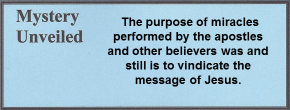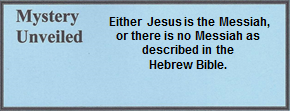18.02.06 Mk. 16:20; Jn. 20:30-31; 21:24-25
THE DISCIPLES PREACHED AND PERFORMED MIRACLES
Mk. 20 And they went out and preached everywhere, the Lord working with them and confirming the word by the accompanying signs.
Jn. 30 Jesus performed many other signs in the presence of His disciples that are not written in this book. 31 But these are written so that you may believe Jesus is the Messiah, the Son of God, and by believing you may have life in His name.
24 This is the disciple who testifies to these things and who wrote them down. We know that his testimony is true. 25 And there are also many other things that Jesus did, which, if they were written one by one, I suppose not even the world itself could contain the books that would be written.
“His testimony is true.” When the New Testament writers used terms such as “testimony” or “bore witness” or “I have seen and testify,” these are statements of legal terminology. These were common in Roman, Greek, and Jewish cultures whereby the author placed himself under oath concerning the truthfulness of the statement made.[1] The purpose of the miracles that Jesus performed was to vindicate His message and ministry (Jn. 3:2; Acts 2:22).

“I suppose not even the world itself could contain the books that would be written.” The ministry of Jesus was so profound, that it was impossible to record all of the events. Scholars have estimated that all the events written in the gospels comprise less than 100 days of His life. Therefore, it is not surprising that references to Jesus, or what He said and did, may not be found elsewhere in the New Testament. For example, a summation of a teaching of Jesus in 1 Thessalonians 4:15 begins with “According to the Lord’s own word….” Yet no reference to this quotation is found anywhere in Scripture. In another example, a rare quotation of Jesus is found in Acts 20:35 and 1 Clement 46:7 where He said, “It is more blessed to give than to receive.”
Yet within a few decades after Jesus, a number of teachers attempted to change the true gospel. Jesus and the apostles had warned that false teachers would come and deceive many (Mt. 24:4; Acts 20:29). Likewise, modern students of the word should not be deceived by so-called ancient writings. One of the challenges of this study has been to continually discern truth from elaborations and embellishments by various individuals throughout history.
The gospel writers wrote primarily of historic events, while the Apostle Paul wrote of historic events along with their implications and the many infallible proofs of the resurrected Christ Jesus. Note the following from one of his letters:
12 Now if Christ is proclaimed as raised from the dead, how can some of you say, “There is no resurrection of the dead”? 13 But if there is no resurrection of the dead, then Christ has not been raised; 14 and if Christ has not been raised, then our proclamation is without foundation, and so is your faith. 15 In addition, we are found to be false witnesses about God, because we have testified about God that He raised up Christ —whom He did not raise up if in fact the dead are not raised. 16 For if the dead are not raised, Christ has not been raised. 17 And if Christ has not been raised, your faith is worthless; you are still in your sins. 18 Therefore, those who have fallen asleep in Christ have also perished. 19 If we have put our hope in Christ for this life only, we should be pitied more than anyone.
1 Corinthians 15:12-19
A final Judgment Day is coming for every person; no one can escape it. Those who accepted Christ will enter heaven’s eternal gates and those who denied Him will have eternal death.
The message of Jesus Christ spread like wildfire across the Roman Empire to both the Gentiles and Jews. While the Oral Tradition was an accurate transmission within Judaism, it was not so for Gentiles who did not have an oral cultural tradition. The gospels were written and within two or three decades the message of Jesus was spread accurately by first and second generation Jewish apostles. Note the similarities in 1 Corinthians, written by the Apostle Paul and Acts, written by Luke.
(Paul) 1 Cor. 15:1-4 (Luke) Acts 2:23-33
Death of Jesus (v. 3) Crucifixion (v. 23)
Burial of Jesus (v. 4) (v. 31)
Resurrection (v. 4) (v. 32)
Eyewitnesses (v. 5 ff.) (v. 33)
Jewish congregations that believed in Jesus as their Messiah continued to read the Torah and the Prophets during Jewish worship services. The Jerusalem believers met daily in their homes as well as at the Church of the Apostles, for communion and the words of Jesus were studied, as were the Scriptures of the Hebrew Bible. The church leadership consisted entirely of Jews, under the direction of James, the half-brother of Jesus.
It is believed that these leaders continued to meet in the traditional Upper Room, where the disciples had their last supper with Jesus. Supposedly, the Upper Room survived both the destructions in A.D. 70 and the Second Revolt in A.D. 132-135, although not all ancient sources agree on this point. Note these interesting words by the 4th century church father Epiphanius, who wrote of a small church that survived Hadrian’s destruction of Jerusalem.
Hadrian found the city completely leveled to the ground and God’s temple treaded down, except for a few houses and the church of God, which was quite small. To it the disciples returned after the Savior’s ascension from the Mount of Olives. They went up to the Upper Room, for it had been built there – that is, in the part of the city called Zion, which part was exempted from destruction, as also were some of the dwellings around Zion and seven synagogues, the only ones which existed in Zion, like monks’ cells. One of these survived until the time of Bishop Maximos and King Constantine. It was like a tent in a vineyard, to quote the Scripture.
Epiphanius, De Mensurie et Ponderibus 14[2]
By the mid-second century, Justin Martyr recorded that the Scripture was read along with the “Memoirs of the Apostles.” Those “memoirs” collected and became known as the New Testament.[3]

Finally, a story is presented that has often been called mythical in the West. But some congregations in the Middle East believe it is absolutely true. It is the story of King Abgarus and a letter that he wrote to Jesus. To many it is not worth reciting, but to others it is a mystery; an enigma.
[1]. Bookman, When God Wore Sandals. CD Trac 5.
[2]. Mackowski, Jerusalem City of Jesus. 143, 259-60; Baldi, Enchiridion Locorum Sanctorum. 733, 478.
[3]. Martin, Worship in the Early Church. 69; Justin Martyr, First Apology 67 Internet Archive.